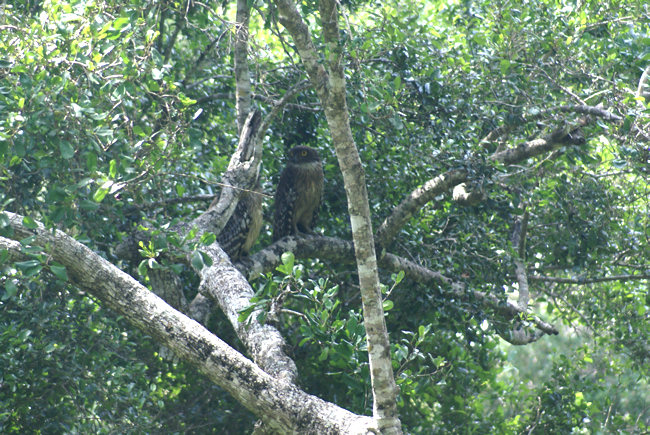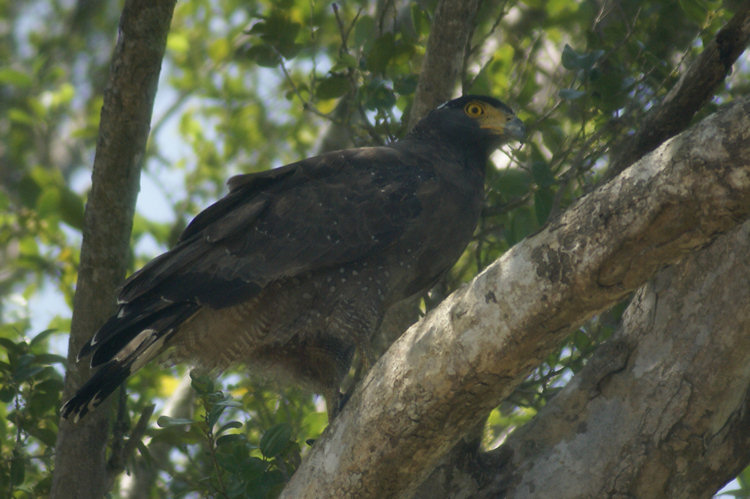Sri Lankan Birds of Prey
You have to look very hard up in the trees to spot Birds of Prey on your 4x4 safari tour of Yala National Park. They seem to merge in with the trees. A good example is the photograph below of a Sri Lankan Brown Fish Owl. They are large birds and you would thank that they would stand out.

Can you spot the Yala National Park Sri Lankan Brown Fish Owl?
These winged predators know where to stand to look for prey. Sri Lanka has a great variety of hawks eagles and owls. This includes the Black Eagle, Grey-headed Fish Eagle, Crested Hawk-eagle, Crested Serpent Eagle, Common Kestrel, Crested Goshawk, Indian Peregrine Falcon, Jerdon's Baza, Mountain Hawk Eagle, Pariah Kite, Rufous-bellied Eagle and the White-bellied Sea Eagle. Some of the owls to look out for are the Serendib Scops, Bay Owl, Brown Hawk, Indian Scops, Brown Wood Owl, and the Chesnut Backed owlet.
Sri Lankan Brown Fish Owl
The regal looking owls can be identified by their squat flattened head. It seems to be more elliptical than the normal round ball shaped head of other owls. Its camouflage grizzled plumage helps it look like part of a tree. It has white plumage around its throat that looks as if it has a bib tied around its neck.
The Sri Lankan Brown Fish Owl's piercing yellow eyes never seem to let you out of its gaze. Hungry owls will feed on carrion but they mainly hunt for fish, frogs and aquatic lizards. Brown Fish Owls lay one or two eggs. Their breeding season is between November to March. The eggs are incubated for around five weeks and the chicks fledge after a further seven weeks.

Sri Lankan Crested Serpent Eagle
Sri Lankan Crested Serpent Eagle
This eagle is a specialised reptile predator that hunts over the jungle woodland of Sri Lanka looking for snakes and lizards. It constructs large nests out of sticks but normally only lays one egg. When they are disturbed the crest feathers on their head becomes erect to make their head seem larger.
They actively hunt in the mornings but the rest of the time they seem to perch on a good advantage point and wait in ambush for prey to come within its scanning area. Once spotted they swoop down and grab it with their long talons. Male and females help build the nest high in the tree tops. Only the female Crested Serpent Eagle sits on the eggs. She will lay one or two eggs. Both parents will defend the nest site aggressively.
Travel books

